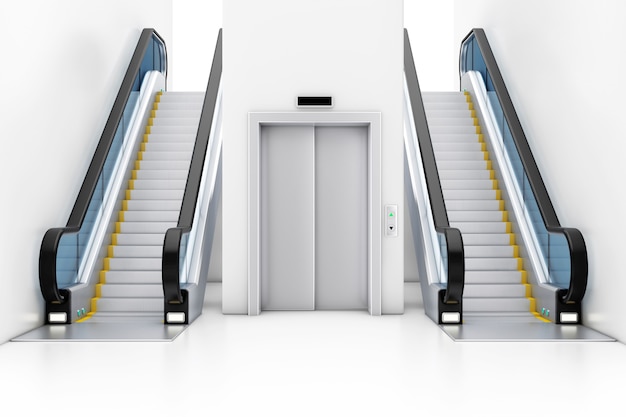Affordable Lift Repair Near Me: Specialist Specialists at Your Solution
Diving Into the World of Lifts: Usual Problems Faced by Different Lift Mechanisms
As we browse with the upright transport systems of modern-day buildings, lifts stand apart as an important component of our day-to-days live. Nevertheless, behind their smooth operation exists a world of complex mechanisms that can often experience challenges. From hydraulic elevators to grip systems and machine-room-less designs, each lift type features its set of usual issues. Comprehending these challenges is vital for ensuring the smooth performance of these essential systems. Let's check out the intricacies that underlie the procedure of elevators and the prospective concerns that can arise, clarifying the detailed web of lift systems.
Hydraulic Elevators
Hydraulic lifts, frequently liked for low-rise buildings, utilize fluid pressure to manage the motion of the lift car (lift repair companies). This system includes a hydraulic pump pushing oil into a cyndrical tube, creating the lift to relocate the desired direction. While hydraulic elevators are understood for their smooth and peaceful operation, they do include their own collection of usual concerns
One prevalent problem with hydraulic lifts is oil leakage. In addition, concerns with the control system, such as malfunctioning shutoffs or a malfunctioning pump, can create disturbances in the lift's activity.
Regular maintenance and prompt repairs are necessary to ensure the smooth functioning of hydraulic elevators. By addressing these typical issues proactively, structure proprietors can reduce downtime and ensure the safety and efficiency of their upright transportation system.
Grip Lifts
When considering upright transportation systems in buildings, another usual type besides hydraulic lifts is the traction lift. Traction lifts operate utilizing a system of ropes and weights that move the elevator vehicle by gripping onto the hoist ropes. This system permits smoother and much faster vertical transport compared to hydraulic systems.
Among the common concerns dealt with by grip elevators is rope wear. The consistent motion of the ropes within the traction system can cause tear and put on over time, possibly creating the elevator to breakdown or come to be risky for usage. Normal assessments and upkeep of the ropes are necessary to ensure the lift's proper functioning and safety and security.
Another problem that grip elevators may run into is associated with the control system. Problems with the control system can cause concerns such as erratic motion, hold-ups in feedback times, or even total shutdowns. Normal screening and maintenance of the control system are important to avoid such issues and guarantee the lift's integrity.
Machine-Room-Less (MRL) Lifts

Among the key parts of MRL elevators is the portable gearless traction equipment that is set up within the hoistway. This maker effectively drives the lift auto without the requirement for bulky devices located in standard traction lifts. Additionally, MRL lifts generally make use of a counterweight system to stabilize the automobile, further improving their energy efficiency.
Despite their benefits, MRL lifts might face difficulties associated with repair and maintenance because of the restricted room for equipment installation. Availability for servicing parts within the shaft can be restricted, requiring specialized training for service technicians. Proper maintenance routines and routine examinations are crucial to guarantee the continued smooth procedure of MRL lifts.
Overloading and Weight Restriction Issues
Overwhelming and weight limit issues are crucial concerns in lift procedures. Elevator producers design raises with specific weight abilities to guarantee passenger safety and security and equipment durability.
When elevators are overloaded, it puts excessive pressure on the electric motor, cable televisions, and other parts, potentially causing breakdowns or malfunctions. Safety systems such as sensors and overload sensing units remain in place to stop lifts from relocating if they identify excess weight. In addition, surpassing weight limits can cause increased power consumption and damage on the elevator system.
To minimize overloading concerns, developing supervisors ought to plainly display weight limitations in elevators and inform owners on the value of adhering to these constraints - lift repair companies. Regular maintenance checks by qualified technicians can likewise aid ensure that elevators are running within secure weight parameters. By addressing overloading and weight restriction problems proactively, structure proprietors can enhance elevator security and performance
Electrical System Failures
Surpassing weight restrictions in lifts can not only result in mechanical problems yet additionally potentially add to electrical system failings within the lift infrastructure. Electrical system failures are an essential concern in elevator operation, as they can trigger unforeseen closures, breakdowns, or perhaps security dangers. One usual electric concern is the getting too hot of parts as a result of too much current circulation brought on by overloading the elevator beyond its capacity. This can lead to damage to the electric motor, control, or circuitry systems, lift repair near me leading to expensive repair services and downtime.
Regular maintenance and inspections are vital to recognize and attend to possible electrical concerns promptly, making sure the efficient and risk-free procedure of elevator systems. By adhering to weight limitations and conducting routine electric system checks, structure owners can alleviate the threat of electrical failings in lifts.
Conclusion

Hydraulic elevators, usually chosen for low-rise buildings, use fluid pressure to control the activity of the lift car.When thinking about vertical transportation systems in structures, one more common kind aside from hydraulic lifts is the traction elevator. Grip elevators operate making use of a system of ropes and counterweights that relocate the lift car by grasping onto the hoist ropes. Unlike typical elevators that require a different maker room to house the equipment, MRL elevators integrate most of the elements within the shaft, eliminating the need for a committed machine space.In verdict, lifts face typical issues such as hydraulic malfunctions, traction system failures, and electric system problems.